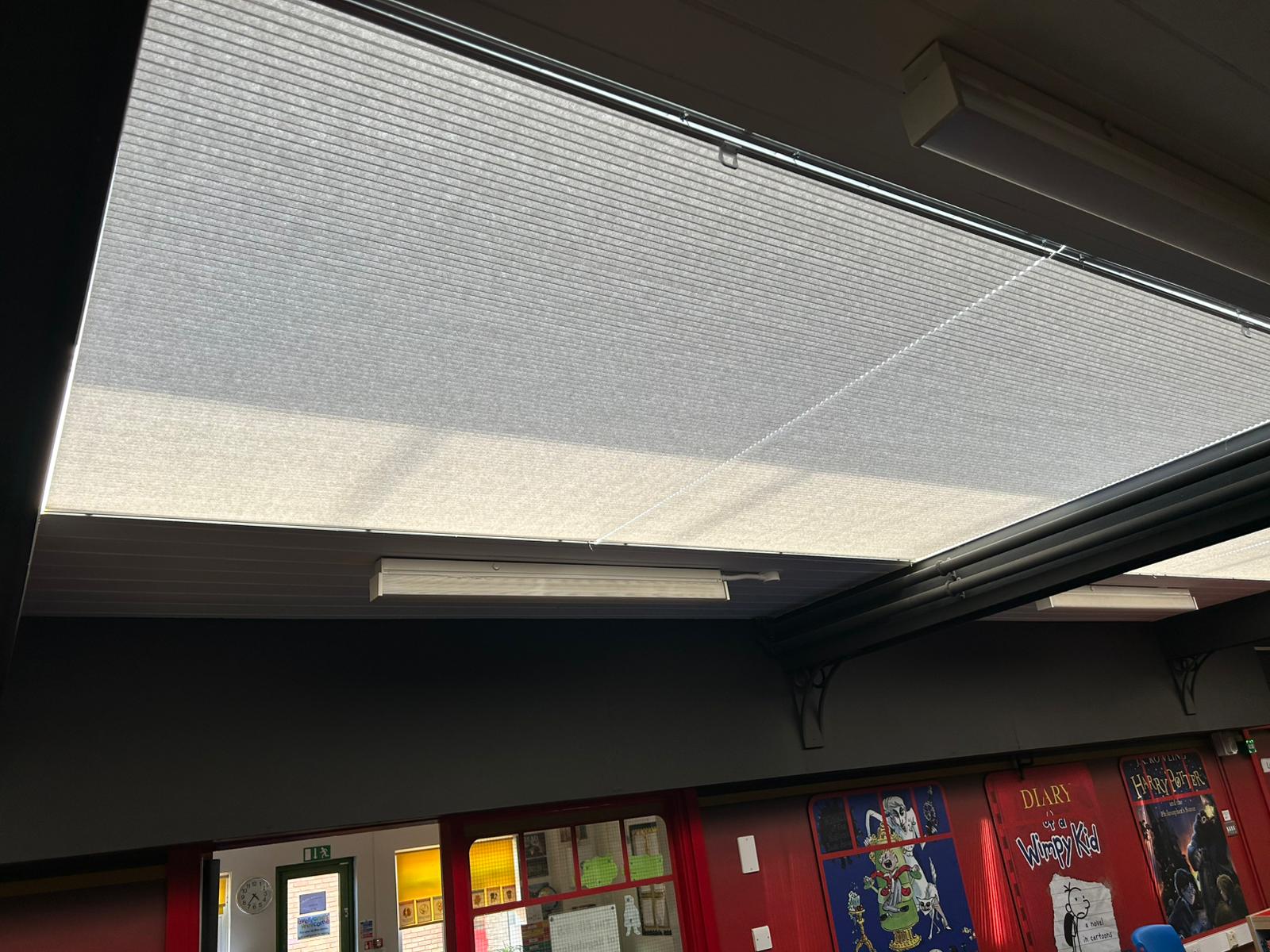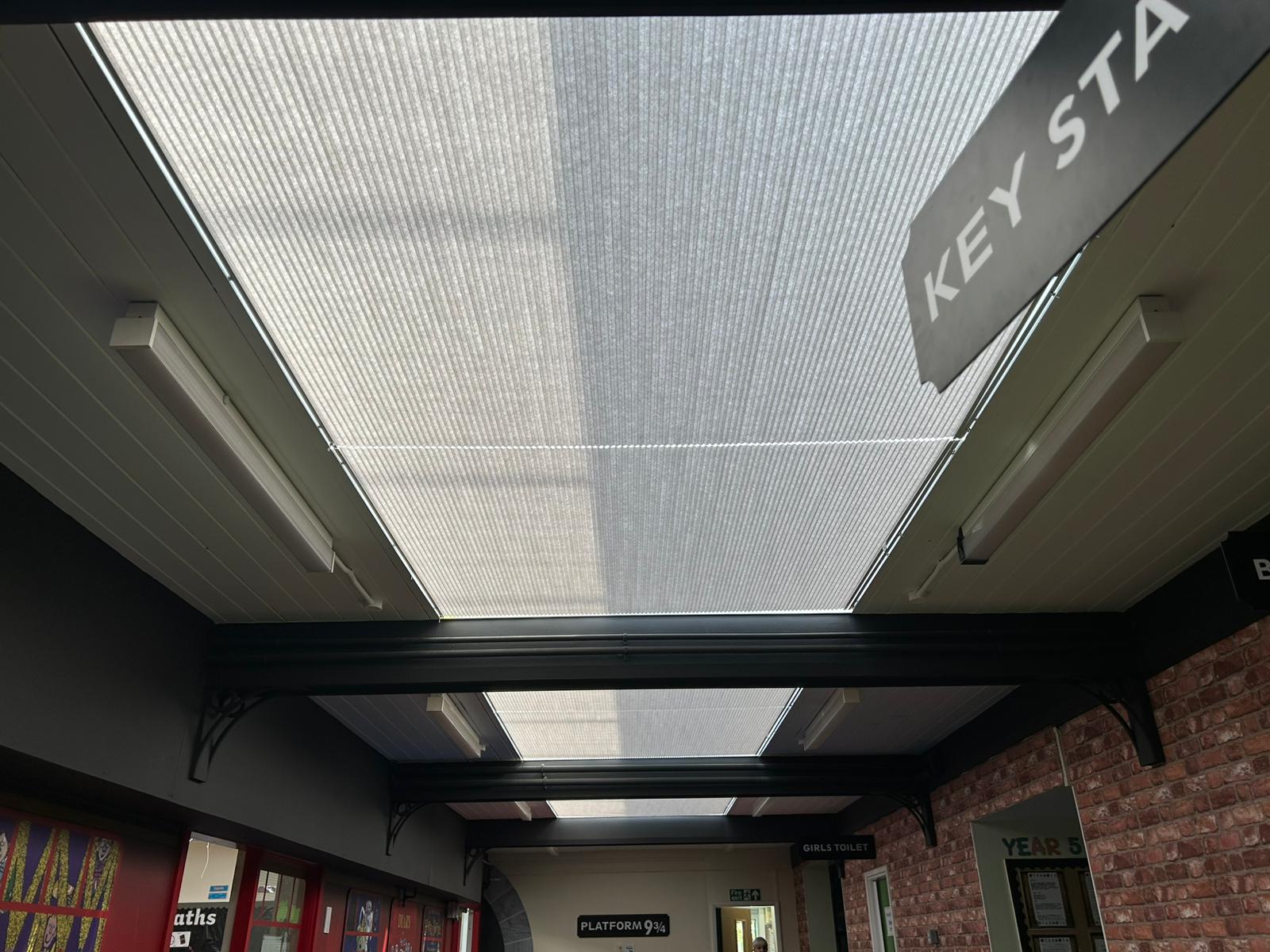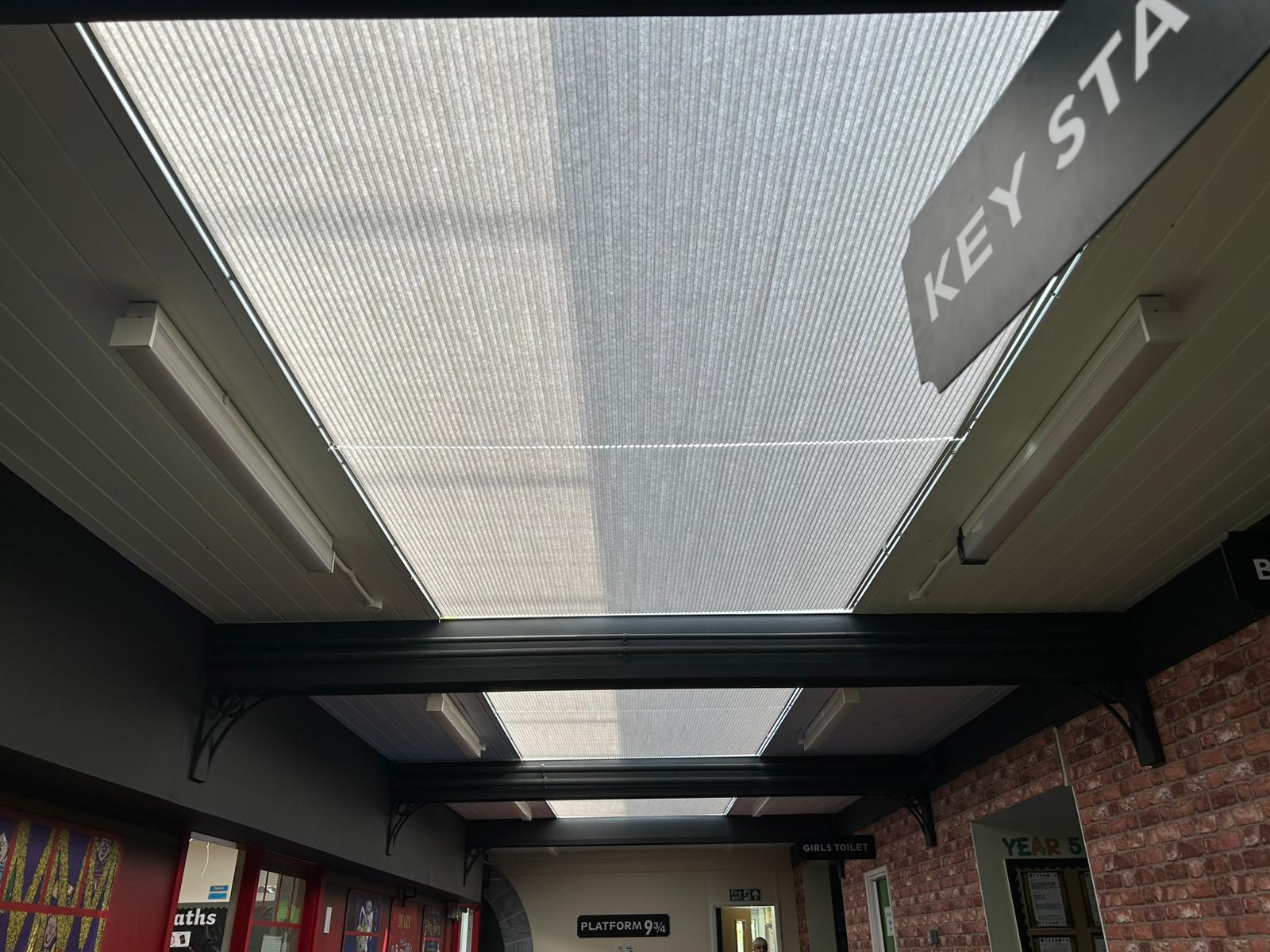Letting the Light In, Without the Glare with Cellular Roof Blinds.
Yesterday, we finished a project that might not look like much on paper, but it’ll make a real difference not just to a building, but to the children who use it every day.
A local school got in touch with a challenge: their library was flooded with natural light from overhead roof windows, which sounds great until you realise the glare was so strong it made reading almost impossible. On top of that, the heat build-up from those roof lights was making the space uncomfortable especially during warmer days.

They didn’t want to block out all the light – they just needed to soften it, reduce the glare, and help control the heat.
Our solution? Cellular roof blinds using a light-filtering fabric with a white reflective backing. This keeps the space naturally bright but removes the eye strain and discomfort. The cellular design also helps reduce heat, making it a calmer and cooler place to concentrate.

The added bonus with using cellular fabric is that the fabric is made of small pockets that traps the air inside the cellular blinds that works brilliantly in retaining heat in the winter.

Even while our team were fitting the blinds we were getting comments from the teachers “What a difference, it already feels so much cooler”
The cherry on the top for me is I got to watch this project from start to finish. I measured the blind, I watched the blinds being made in our factory (and made sure we had them fitted in days and not weeks) and thanks to the photos from our fitting team get to see the end results.
Reading is one of the most important skills any child can develop. So to be asked to help create an environment that makes it easier – and more enjoyable – for children to read? That felt good.
It’s jobs like this that remind us why we do what we do and why we love it.
❓ Cellular Blinds – Frequently Asked Questions
Q: What are cellular blinds?
Cellular blinds (also known as honeycomb blinds) are made from layers of fabric that form a honeycomb-shaped structure when viewed from the side. This clever design traps air, providing insulation and improving energy efficiency.
Q: Are cellular blinds good for reducing heat and glare?
Yes. Cellular blinds are excellent for managing heat and light. Light-filtering fabrics soften harsh sunlight and reduce glare, while the cellular design helps keep rooms cooler in summer and warmer in winter.
Q: Do cellular blinds block all the light?
Not always, it depends on the fabric you choose. Light-filtering options allow soft, natural light to pass through while still reducing glare. For bedrooms or spaces that need darkness, blackout versions are also available.
Q: Can they be used on roof windows or skylights?
Yes. Cellular blinds are a great solution for roof windows, especially when fitted with tension systems that keep them neatly in place even on angled or overhead windows.
Q: Are cellular blinds easy to operate?
Absolutely. Many are cordless, using a simple push-up and pull-down system that is great for safety and a clean, uncluttered look. Motorised options are also available for hard-to-reach windows.
Q: Are they energy-efficient?
Yes. The air pockets inside the honeycomb structure act as a layer of insulation, helping to reduce heat loss in winter and minimise heat gain in summer, ideal for improving comfort and cutting energy bills.
Q: Can I get them in different colours and styles?
Definitely. Cellular blinds come in a wide range of colours, textures and fabric types – from subtle neutrals to bold modern shades so you can match them to your space and style.
Q: Are cellular blinds suitable for schools or commercial buildings?
They’re a great choice. Their clean design, low maintenance, and effective light control make them ideal for learning environments, offices, or any space where comfort and focus matter.

About Phil Coleman
Phil Coleman is the fifth generation of his family to run Barlow Blinds, a Leicester business that has been making blinds since 1887. With over 30 years of hands-on experience, Phil has played a leading role in shaping industry standards including being part of the team that wrote the only NVQ qualification for blind and shutter installers. He also serves on the Management Committee of the British Blind & Shutter Association (BBSA), helping to set best practice across the trade. Under his leadership, Barlow Blinds has remained true to its founding principle: “It’s not our job to find customers for our blinds, it’s our job to find the right blinds for our customers.”


